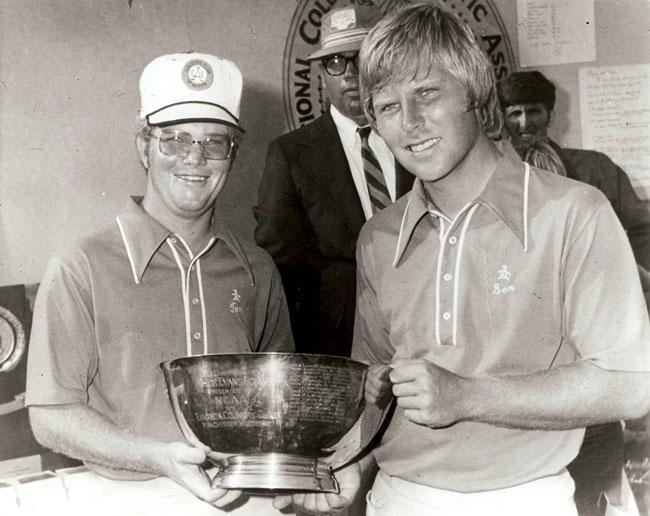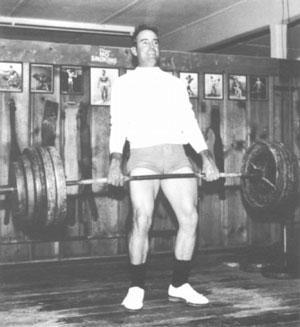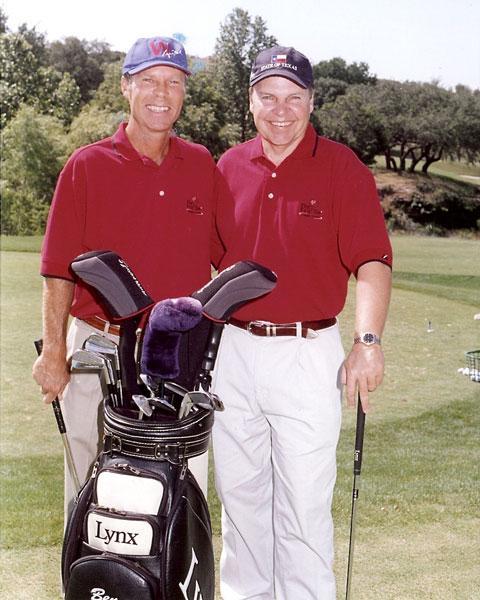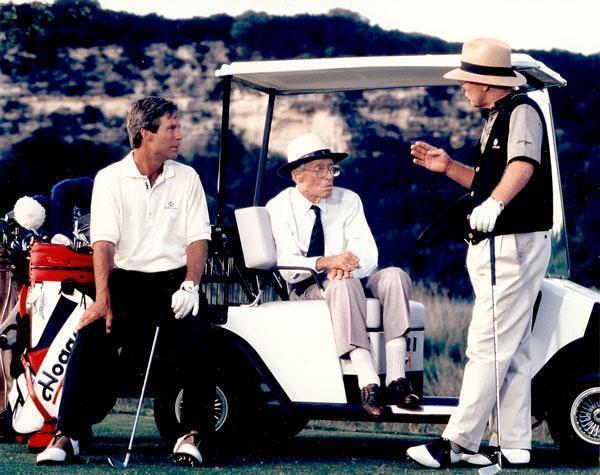Those who know a bit—or a lot—about the collecting my wife Jan and I have done over the past decades realize that our focus has been on Physical Culture, broadly defined. (Those who remain unclear about what the term “Physical Culture” means might want to take a look at one of the earlier posts in this blog—“Physical Culture,” which appeared on September 23, 2009.) This “field” was the focus of our collecting because of our personal backgrounds as well as our understanding, as historians, that although there were many excellent libraries inside and outside the United States which dealt with various competitive sports, there were no significant public libraries with a focus on the sort of purposeful exercise which is the basis of most of what we know as Physical Culture.
In the very earliest years of my collecting, of course, I was primarily interested in assembling books and magazines that dealt with my own avocation—progressive resistance exercise. But even as far back as the middle 1960s—by which time I had become aware of several significant private collections in the field, including those assembled by David Webster, Harold Weiss, Angelo Iuspa, Gerard Nisivoccia, the late Ray Van Cleef, and Ottley Coulter—I had also learned that even in our country’s greatest libraries, such as the Library of Congress and those at major universities like Harvard, Yale, and my own University of Texas, there were very few Physical Culture publications. For this reason, as I have written elsewhere, I asked Ottley Coulter to come to Austin in 1966 so that we could speak to the renowned Director of UT’s Rare Books Library, Fannie Ratchford, about whether she would be willing to accept and care for Coulter’s large collection. A word here about Fannie Ratchford, a woman who—a decade or so earlier—had had what I now realize was a profound effect on the trajectory of my life.
My relationship with Miss Ratchford began during the summer of my freshman year at UT, in 1957, when I took a temporary job as a student helper at the Rare Books Library. Miss Ratchford was a woman of great accomplishment, having built that library into one of the finest of its kind in the country, and she had the sort of quiet dignity which commanded respect. Miss Ratchford revered books, of course, and she was also a true believer in the importance of tradition. In fact, it was her love of tradition which caused her to notice a lowly freshman. What happened is that on my second or third day on the job she called me aside, told me that I looked like an “able-bodied boy,” handed me an oaken bucket, and asked me to take it to the Student Union Building next door and tell the supervisor of the snack bar that she had sent me. Although I was more than a little puzzled by the request, I set out on my quest somewhat like Frodo Baggins in Tolkein’s Lord of the Rings—ignorant of my task but willing nonetheless to go forth.
At the snack bar, when I held up the oaken bucket in front of the supervisor of the snack bar she immediately laughed, took the bucket, and filled it brimful with ice from their large ice chest. With the mystery solved I returned to the Rare Books Library with my bounty and handed it proudly to Miss Ratchford, who in my absence had brewed a pot of tea and set out on a table a number of glasses, a bowl of sugar, a saucer of lemon slices, and a small container of freshly cut mint from a pot I had noticed outside on the library’s private, sun-drenched second-floor terrace.
She then invited me to join her and the library staff for their afternoon tea, and from that day until I reluctantly left my job to begin the fall semester I was the person whose job it was to fetch the bucket of ice for our daily tea. I can still recall the ceremonial atmosphere of those teas, which were formal but also very entertaining—filled with good talk about books, films, and ideas. A frequent topic of discussion, as expected, involved a particular book or group of books and how they were being used by scholars or catalogued for future use. I quickly saw that the people at that table, drinking sweet, ice-cold, lemon-and-mint-flavored tea from beaded glasses took their jobs as the caretakers of UT’s rare books with complete seriousness and dedication. Being an avid reader of books, as I already was, I came under the spell of these booklovers and soon I took a certain pride in the work I did cleaning and caring for our many treasures.
Looking back over more than 50 years on those lovely, tranquil teas in that quiet, beautiful room or—even better—on our outside terrace with its hedges, small trees, flowers and, of course, its large stone pot filled with Miss Ratchford’s mint plant I have absolutely no doubt that that summer in the Rare Books Room was one of the main reasons I developed a vocation—a calling—that centered around the collecting of and caring for books and magazines.
(As an aside, fans of trivia or odd connections would probably enjoy knowing that in the 1920s Lutcher Stark, the man for whom the Stark Center is named and then the chairman of the university’s Board of Regents, convinced his mother, Miriam Lutcher Stark, to donate her exceptional, 7000 volume collection of rare books to UT—a gift for which the Rare Books Library was named in her honor. The most recent addition to this story is that the conference room in the Stark Center has officially been named the Miriam Lutcher Stark and W.H. Stark Conference Room.) In any case, Ottley was enthusiastic about my suggestion that he meet Miss Ratchford because he was already in his 70s and certainly aware that it would be a very fine thing if his collection could find a permanent home in a public institution so that instead of it being dispersed willy-nilly by his family it would become available to scholars and fans of the field of Physical Culture.
Although Ottley and I subsequently met with Miss Ratchford, who was so impressed by the size and breadth of his collection that she said she would be proud to have it as part of the Rare Books Collection, other considerations prevented us from creating the sort of support network we needed to have at UT in order for Ottley’s collection to function as we knew it should. Those considerations are too complex to discuss in detail here, but I believe Ottley would have been pleased to know that over 40 years later his beloved collection finally found its way to UT and is now available to scholars and fans alike.
As most readers of this blog would know, Jan and I eventually added the Ottley Coulter Collection to our own and—at that time–made a commitment to each other to continue Ottley’s efforts to build a comprehensive book and magazine library focusing on Physical Culture. Later, when we brought our collection to the University of Texas in 1983, we hoped we could create a permanent, public home for this growing accumulation of publications, and approximately five years ago our dream began to take shape. Also, once we realized we would have 27,500 square feet for our facility, we began to expand our plans as to how we could make the best use of so much space. Our Physical Culture Collection, of course, was the foundation of it all, but because Jan and I are longtime members of the department of Kinesiology and Health Education—which deals with athletics and human movement—we decided to broaden our collecting focus to include sports.
We realized right away, however, that even with such a spacious facility there was no way we could collect all, or almost all, of the books and magazines in English in all sports. What’s more, even if we could have assembled such a collection in every sport we would have needed a facility many, many times larger than the one we had. Therefore, although we had almost 2,000 books about various competitive sports we decided to concentrate our efforts on conditioning techniques for sports as well as on a few individual sports in which we already had—or at some point acquired–a significant collection. So far, the only sport we’ve singled out for inclusion has been golf—the “auld game” —a cradle to grave activity and one the most ancient of all sports.
It should also be noted that the sport of golf touched the life of Lutcher Stark, the aforementioned sportsman and philanthropist whose fortune formed the basis for the Stark Foundation, our primary donor. How this happened, so we’ve been told, is that Lutcher’s father, W.H. Stark, who greatly expanded the Stark timber empire, truly loved the sport and in his later life played as often as he could at a golf course another timber baron had built in the town of Orange, Texas. For some reason, this timber baron decided to ban the senior Mr. Stark from the course, whereupon Lutcher contacted the most famous architect of golf courses in the country, Donald Ross, and hired him to build a state-of-the-art course in Orange on part of the more than 600,000 acres of land the Starks controlled. Called Sunset Grove, the course is a gem, and Lutcher’s father played there almost daily for the rest of his life. What’s more, Lutcher, in a grand gesture, decided that a fine way to celebrate Sunset Grove and demonstrate his own vigor would be to play as many holes as possible one hot summer day. Walking all the way, he played 81 holes from before sunrise to after sunset–as they say in East Texas, from “can (see) to can’t.”
Another part of the reason we selected golf was that the first major gift we received related to any specific sport was a collection of approximately 1800 volumes—many of which are quite rare. The collection had been assembled over many years by the late Edmund Hoffman, a prominent businessman from Dallas who had an abiding love for golf and its sporting traditions. Mr. Hoffman died in 2000, but his widow and their son—after visiting the site of the future Stark Center and seeing some of our own collection—decided to donate the Edmund Hoffman Collection to the Center. A bit later, they also provided a number of beautiful golf prints as well as approximately $110,000 to help us support for a time the salary of our Associate Director for Library Services.
Buoyed by this gift, I got in touch with Scott Sayers, the longtime friend and business manager of Ben Crenshaw, the putting genius who won two Masters and a worldwide fan base after winning 19 PGA events along with two national NCAA golf championships while playing for the University of Texas. Well known for his knowledge of golfing history and his extensive collection of rare books on the sport, Crenshaw—an Austinite—seemed to me like a man who would understand what we were trying to do at the Stark Center and would perhaps join our effort to preserve the past. As I soon learned, Scott Sayers was himself a serious collector of golf-related items; and after I explained what we were doing and gave him a tour of the Stark Center he urged Ben to come along on his next visit.
To shorten a long story, after a several trips to the Stark Center both Sayers and Crenshaw agreed to place their unique collections with us—including photos, films, paintings, videotapes, game-use clothing, clubs, trophies, framed collages of autographed photos, golf-bags, clippings, and even the customized golf cart Ben had been given when he captained the U.S. team when they won the 1999 Ryder Cup over the European team. The showpiece of this wonderful collection is the solid silver replica of the clubhouse at Augusta National—given to him after he won his first Masters in 1984.
The Crenshaw-Sayers Collections being on display at the Stark Center soon led to our receiving an equally splendid collection—this one from another of our university’s greatest golfers, Tom Kite, who also won 19 PGA tour titles, including the 1992 U.S. Open, one of the sport’s four “Majors.” Crenshaw and Kite both grew up and still live in Austin, both are almost exactly the same age, and when they both played on the same UT team no other college had much of a chance to win.
Kite’s collection has fewer photos and films than did Crenshaw’s, but the scrapbooks put together by Kite’s mother—beginning when he was only six—are remarkably thorough and neat. Such scrapbooks are life’s blood to researchers, and there are dozens of these thick books; stacked on top of each other they must be over five feet in height. Kite’s trophy collection is also very extensive, and it reflects the fact that he was among the top men on the PGA’s prize-money list for many years. Another reason we’re particularly pleased to have this association with Tom is that he was one of the handful of tour golfers who agreed back in 1984 to take part in a research project. To do this he went to the clinic of the renowned orthopedic surgeon, Dr. Frank Jobe, in Los Angeles. In Dr. Jobe’s clinic, Tom underwent a series of electromyography procedures so that Jobe could ascertain the biomechanical intricacies of his golf swing as well as exactly when the muscles involved in his swing were engaged, how fully they were engaged, and for how long they were engaged.
These studies allowed Jobe to have a full understanding of the individual swings not only of Kite but also of each of the other few PGA professionals who agreed to be Jobe’s test subjects, an understanding which allowed Jobe to design a strength training program specifically tailored to the particular swing patterns of each of the tour pros. This research project was the first step in a long process which led to the emergence and eventual popularity on the PGA tour of the “Fitness Trucks” which follow the tour and are transformed into a stationary gym staffed by physical trainers and therapists and fully equipped with weights and other exercise equipment. (Anyone interested in knowing more about how these rolling gyms developed can find a lot of information in the April 1994 issue of Iron Game History.) I should add that Tom began a serious strength and fitness program right after he was tested and shown which exercises would be best for him, and he remains an avid trainer with a strikingly youthful, powerful, and title-winning body at the age of 60.
Beyond the collections of former UT teammates Crenshaw and Kite we have plans to increase our holdings in golf. As these holdings arrive and become part of the library at the Stark Center I will keep readers of this blog aware of what we have. Already, a great many people have come to the Center specifically to see some of the Crenshaw and Kite treasures and to use the Edmund Hoffman Collection. This sustains us. Seeing a researcher sitting in our Rare Books Room quietly reading about the Auld Game or watching men and women, too, stand transfixed for minutes examining the beautiful silver Masters Trophy always makes me realize that those people, who are deeply devoted to their sport, are brothers and sisters under the skin. There’s often a purity and a selflessness to this devotion, and in my opinion it speaks to one of the best parts of being human. I feel blessed, as does Jan, to be able to feed this innocent hunger, to fuel the devotion.
 |
 |
 |
 |



Leave a Reply